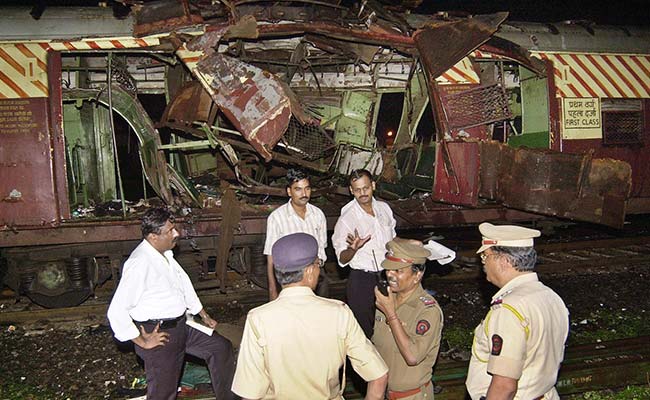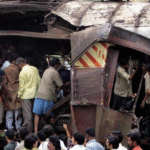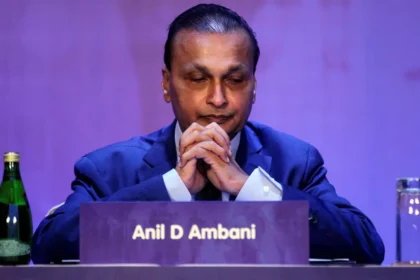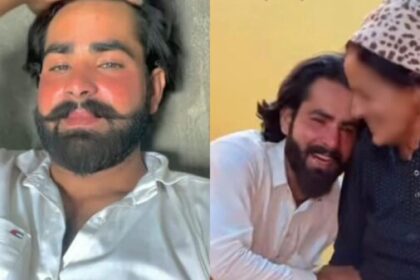The Long Shadow of July 11 — A City, A Verdict, and the 19-Year Wait for Justice
At 6:24 PM on July 11, 2006, Mumbai’s suburban life — loud, gritty, relentless — suffered a rupture so violent that it echoed through every local train compartment, every television screen, and every courtroom for nearly two decades. That evening, in a span of just 11 minutes, seven coordinated explosions tore through first-class compartments on Mumbai’s Western Railway line. The terror attacks claimed 189 lives and injured over 800, etching the date permanently into the memory of a city that had already seen more than its share of tragedy.
Now, nineteen years later, the Bombay High Court has acquitted all twelve men who were convicted by a special MCOCA court in 2015 for these blasts. The court’s verdict, delivered in July 2025, has stirred renewed debate over not only the long and tangled course of Indian criminal justice, but also the deep wounds that remain unhealed in Mumbai’s collective psyche.
This is not just a story of a judicial decision. It’s a chronicle of 19 years of uncertainty, trials, appeals, institutional inertia, and the deep grief of families who waited for closure — some for justice, others for vindication.
The Night Mumbai Froze
For Mumbai’s millions, July 11, 2006, was indistinguishable from any other weekday — until it wasn’t.
The bombs, reportedly placed inside pressure cookers and hidden under newspapers in first-class compartments, were triggered using sophisticated timers. The timing of the attacks — during peak rush hour — ensured maximum devastation. The blasts occurred between 6:24 PM and 6:35 PM at the following locations:
- Matunga Road
- Mahim Junction
- Bandra
- Khar Road
- Jogeshwari
- Borivali
- Mira Road
These were not just stations; they were arteries of a city that depends on trains like it does oxygen. In minutes, Mumbai’s famously resilient local train network became the site of carnage, panic, and chaos. Cellphone networks collapsed. Rumours spread fast. Hospitals were overwhelmed. Lifeless bodies and dismembered limbs turned first-class compartments into crime scenes from a war zone.
Initial Investigation and The MCOCA Trial
The initial investigation by the Maharashtra Anti-Terrorism Squad (ATS) concluded that the attack was carried out by operatives linked to the banned Pakistani terror group Lashkar-e-Taiba (LeT) and the Students Islamic Movement of India (SIMI). Based on this theory, the ATS arrested several men, mostly from Maharashtra and Uttar Pradesh, who were accused of conspiring, assembling bombs, and planting them across the railway network.
The case, tried under the draconian Maharashtra Control of Organised Crime Act (MCOCA), relied heavily on confessions, some of which were later retracted. Evidence included alleged links to banned outfits, recovered materials said to be used in bomb-making, and testimony from a handful of protected witnesses.
After a nine-year-long trial, in 2015, 12 men were convicted, with five sentenced to death and seven to life imprisonment. The special court declared that the conspiracy had been proven beyond doubt. Families of victims hailed the decision, believing justice had been served.
But the defense team cried foul. They alleged torture, fabricated evidence, and a rushed prosecution. Over the next decade, as the appeals moved through the High Court, the case began to appear increasingly riddled with gaps.
Bombay High Court’s Stunning Reversal: Acquittal of All 12
In a moment that will go down in Indian legal history, Justices Revati Mohite-Dere and Gauri Godse of the Bombay High Court overturned all 12 convictions in July 2025, citing “serious procedural lapses, lack of corroborative evidence, and failure to prove guilt beyond reasonable doubt.”
The judges noted that:
- Confessions under MCOCA were inconsistent and sometimes contradictory.
- Key forensic evidence was either missing, improperly preserved, or inadmissible.
- Witness testimonies were not independently verifiable and were possibly influenced by pressure.
- No clear timeline of the accused’s alleged actions could be established with certainty.
- Linkages to Pakistan-based groups, while part of intelligence dossiers, had not been adequately proved in court.
The court expressed concern that the real perpetrators may have never been caught, and that the prosecution had relied on a “narrative-led” investigation rather than evidence-driven forensics.
A Victory or a Vacuum? Mixed Reactions to the Verdict
For the acquitted men — some of whom had spent nearly 19 years in prison — the verdict brought a kind of freedom that is difficult to celebrate. Their families, having endured stigma, social ostracism, and economic collapse, held back tears as they stepped outside the Arthur Road Jail into an unrecognizable city.
Mohammad Sajid, one of the acquitted, told reporters:
“We lost everything — our youth, our families, our dignity. Who will return those years to us?”
Victims’ families, on the other hand, were devastated. For them, justice has not only been delayed but ultimately denied.
“What was the point of these 19 years? We trusted the system. Now, they say the men responsible were innocent? So who did it?” asked Meenakshi Dubey, whose husband died in the Borivali blast.
Legal experts have called the verdict both “historic” and “humbling,” pointing to the urgent need to reform India’s anti-terror laws and forensic protocols.
An Open Wound in the City’s Soul
Mumbai, a city that rarely pauses, had to relive one of its darkest days with the announcement of this verdict. For a metropolis that has lived through bombings in 1993, 2003, 2006, and the 26/11 siege in 2008, each such event is not merely a crime — it’s a collective trauma.
And yet, the city moves on. Vada pav stalls reopen. Locals crowd the same stations where blood once pooled. But beneath the surface, grief simmers — unresolved, unanswered.
As we explore this story in the coming parts — from the breakdown of the investigation, the lives of the accused and the victims’ families, the political consequences, to what this case says about India’s justice system — we invite readers to stay with us. Because the 2006 Mumbai blasts case is not over. Not yet.
The First 48 Hours: Pressure, Panic, and Premature Conclusions
In every high-profile terror case, the first 48 hours are critical — for securing evidence, identifying suspects, and framing the narrative. In the 2006 Mumbai train bombings, however, the first two days saw something else: overwhelming political pressure, a thirst for quick answers, and a rush that would later be questioned by the judiciary.
The Maharashtra Anti-Terrorism Squad (ATS) and Mumbai Police swung into action immediately. Under pressure from the media, public, and political establishment, top officials gave early statements suggesting “external hand” involvement. Within days, intelligence points led investigators to conclude that Lashkar-e-Taiba (LeT), operating from Pakistan, had coordinated the blasts, with help from the Students Islamic Movement of India (SIMI).
While the involvement of foreign elements could not be ruled out entirely, the subsequent arrests seemed far too rapid for a case so complex. Dozens were picked up from different parts of Maharashtra and Uttar Pradesh. Twelve of them would eventually become the core accused — and now, acquitted nearly two decades later.
But as details began to surface, questions also emerged:
- How did the ATS conclude so quickly who was responsible?
- Why were confessions given under duress treated as key evidence?
- Why were critical forensic protocols skipped?
These questions, ignored for years, have now become central to understanding how justice derailed in one of India’s deadliest terror investigations.
The Confession Web — Lawful or Coerced?
A cornerstone of the prosecution’s case was a string of confessions recorded under Section 18 of the Maharashtra Control of Organised Crime Act (MCOCA). MCOCA allows confessions made to senior police officers to be admissible in court — a highly controversial exception to India’s standard criminal jurisprudence, where confessions to police are otherwise inadmissible.
The High Court, however, pointed out three major issues:
- Retractions Were Ignored: Several accused retracted their confessions, alleging torture and coercion. Courts are expected to treat retracted confessions with caution — especially when they form the spine of the prosecution. But in the 2015 trial, the special court had treated these retractions as tactical and not genuine.
- Inconsistencies in Content: Some confessions contradicted others. Details of who planted which bomb, how the logistics were managed, and how meetings were conducted often didn’t align — raising serious doubts about the reliability of the narrative.
- Absence of Corroborative Evidence: In many instances, the High Court noted, the confessions were not backed by independent evidence — forensic, circumstantial, or testimonial.
In short, the case was built not on solid, verifiable fact — but on a narrative that sounded logical but wasn’t legally sustainable.
The Forensics That Never Were
If the confessions had cracks, the forensic evidence was even weaker.
According to court records, the bombs were made using pressure cookers filled with RDX and ammonium nitrate — a signature of earlier terror attacks. Yet, even this standard narrative began to fall apart during appeals.
Some of the key forensic failures included:
- Improper Handling of Bomb Fragments: The samples collected from the blast sites were reportedly contaminated. The chain of custody — a legal term meaning the traceable path from collection to lab — was not clearly documented.
- Lack of Fingerprints or DNA Evidence: Despite the availability of forensic tools in 2006, no fingerprints or DNA of the accused were found on the pressure cookers, train compartments, or timers.
- Questionable Seizure Memos: Items supposedly recovered from the accused — including explosives, SIM cards, maps — had glaring procedural irregularities. Witnesses to these recoveries often turned hostile, or weren’t presented at all.
In effect, the High Court ruled that the forensic evidence in this case was not just weak — it was unreliable.
The Witness Maze: Shadows Without Substance
Witnesses are often the moral core of any case — particularly one where technology or forensic tools are limited. But here too, the investigation faltered.
Several key witnesses were “protected” witnesses, meaning their identities were concealed under MCOCA’s provisions. But when the matter came to appeal, many of these witnesses could not be located, and their testimony was deemed inadmissible or inconsistent.
In some cases:
- Witnesses couldn’t identify the accused in court.
- Others changed their statements between the initial probe and the trial.
- Some even denied giving certain statements altogether.
The Bombay High Court remarked that “eyewitness accounts were either untrustworthy or legally insufficient”, especially when the rest of the case was also shaky.
When Procedure Becomes Punishment
A theme that runs through the High Court judgment is not just about evidence — but about procedure. Legal scholars often say, “Procedure is the soul of justice.” And in the 2006 train blast case, that soul appears to have been sacrificed.
Some of the procedural failures highlighted include:
- Failure to Provide Legal Aid in Time: Several accused were allegedly interrogated without lawyers present.
- Delay in Producing Accused Before Magistrate: Contrary to legal norms, some of the accused were held for extended periods before being brought before a judicial officer.
- Trial Delays: Though the blasts occurred in 2006, the verdict came only in 2015 — after over 500 witnesses and nearly 3,000 documents were produced. Appeals then took another 10 years, leaving the accused incarcerated through most of their adult life.
Injustice by Default: The Human Cost
Many of the acquitted men were under the age of 30 when they were arrested. Today, they are men in their late 40s and early 50s, having lost the prime of their lives. Some lost parents while in jail. Others saw their children grow up without them. Many were disowned by their communities. A few attempted suicide.
One of them, Zameer Ansari, told a journalist:
“My mother died thinking I was a terrorist. Today, I am free, but she’s not here to see that.”
Another, Khalid Mujahid, didn’t survive to hear the High Court verdict — he died in judicial custody under suspicious circumstances in 2013.
Their lives are not footnotes in a judgment. They are the human casualties of a flawed investigation, collateral in the war on terror where speed often overtakes scrutiny.
Justice Delayed, Denied, or Reimagined?
The acquittal of all 12 accused in the 2006 Mumbai blasts case forces India to reflect not only on its criminal justice system but also on the cost of getting it wrong. In the pursuit of national security, the rights of the individual, the value of evidence, and the principles of due process cannot be discarded.
As the country debates whether justice was denied to victims or finally served to the wrongly accused, the one thing that remains certain is this: justice is not a destination — it is a process. And in this case, that process was flawed, delayed, and deeply human in its failures.
It was just past 6:30 PM when Meenakshi Dubey’s phone rang. Her husband, Nitin, hadn’t come home yet. He was on the 6:15 Virar local, the one he boarded every day after closing his small insurance office in Dadar. That Tuesday, July 11, 2006, seemed routine — until news channels began flashing “BREAKING: Blasts in Mumbai locals, multiple casualties feared.”
What followed for Meenakshi, and hundreds of others like her, was not grief — not immediately. First came the confusion. Then, desperate calls to helplines. Then visits to overcrowded hospitals, peering over bloodied bodies. Then morgues. Then police stations. And then silence.
It took 18 hours before she could identify her husband’s charred wristwatch, found on a dismembered wrist. He had died instantly in the Matunga blast. She never saw his face again.
For nearly two decades, she waited. Through trial proceedings. Through 2015’s partial relief — when convictions were announced. And finally, through the shock of 2025, when the Bombay High Court declared all 12 men innocent.
“What now?” she asks. “If not them, then who? Was my husband just a number? Is that all we get — apologies and legalese?”
189 Families, 189 Versions of the Same Nightmare
Behind the statistics of 189 deaths and 800+ injuries are families that have lived with daily reminders of absence. Fathers who never returned. Sons who were just beginning new jobs. Women who’d been saving for their children’s weddings. Schoolbags that stayed unpacked.
Take the case of 14-year-old Siddharth Mehra, who lost his elder brother, Aditya — a junior executive with a BPO — in the Khar Road explosion. For years, Siddharth refused to use the train. He suffered panic attacks every time he heard a loud noise. He is now a 33-year-old marketing executive who hasn’t taken public transport in over a decade.
“The blast didn’t just kill my brother. It turned me into someone else — fearful, suspicious, anxious forever,” he told a local reporter after the 2025 verdict.
Or Ayesha Sheikh, who lost both her husband and brother in the Jogeshwari blast. Left to raise three children on a modest tailor’s income, she had held on to the court verdict as proof that the system worked. But after the acquittal, she says, “It feels like they declared our grief irrelevant.”
The Legal Labyrinth: Victims in the Backseat
While the legal system is designed to protect the rights of the accused — especially in criminal trials — India’s framework often sidelines victims’ families. They are not always kept informed. Their voices are heard more in media interviews than in courtrooms. Legal aid for families is inconsistent. And state compensation, when offered, is both delayed and inadequate.
After the 2006 blasts, many families received ex-gratia payments — around ₹1 to ₹5 lakh depending on the severity of injury or death. But very few received long-term support. Most fought their battles quietly — for pensions, for school fee waivers, for medical bills. Many gave up altogether.
And when the acquittals came, no government agency reached out to them.
No helpline was activated. No public apology. No explanation.
2015: A False Dawn
The 2015 MCOCA court verdict had offered a kind of temporary closure. For many, the announcement that five accused were sentenced to death and seven to life imprisonment was an emotional balm. It didn’t bring their loved ones back, but it affirmed their pain. It said the system had acted. It said someone was held accountable.
Now, in 2025, that belief has crumbled. The Bombay High Court’s scathing rebuke of the investigation has forced families to relive their trauma, now with the added weight of betrayal.
What makes it harder is that the real perpetrators remain unknown. With the acquitted men walking free, the police and NIA (National Investigation Agency) have offered no fresh leads. There has been no reinvestigation, no public commitment to finding those actually responsible.
Media, Memory, and the Loneliness of Survivors
After the blasts, the media flooded train stations and hospital wards. There were special features, roundtables, candlelight vigils. Over time, however, coverage shrank. The survivors’ stories became old news. Even after the 2025 verdict, many television channels focused more on the acquitted men than the victims’ families.
Only a few reporters returned to the homes of the deceased. One such journalist, Anuja Menon, shared:
“It was almost surreal. Families had scrapbooks, faded FIR copies, newspaper clippings, and laminated death certificates. They had built museums of memory — quietly, painfully.”
Some survivors have formed WhatsApp groups — not for legal coordination, but for emotional support. They share old photos, mark July 11 every year with silent prayers, and discuss government responses (or the lack thereof). Many don’t even live in Mumbai anymore — they moved to escape the city that once crushed them with sorrow.
What Justice Means Now
For the victims’ families, justice is no longer about verdicts. It is about acknowledgment.
They want someone — anyone — in the system to admit that the process failed them. They want officials to say the investigation was flawed. They want an apology that goes beyond the walls of the courtroom.
But most of all, they want the country to remember. Because collective memory is the only thing that ensures accountability in democracies. And when the memory fades, so does the urgency to act.
A Judicial Acquittal, But a Moral Trial Still Unresolved
As the dust settles on the High Court’s verdict, two groups of people walk away deeply unsatisfied.
- One group spent 19 years in jail, wrongly accused and nearly forgotten.
- The other spent 19 years waiting for justice for loved ones who never returned home.
Both suffered. Both were casualties. Both are victims of a system that prized conclusions over correctness.
And both now live in a country where the truth about the July 11 attacks remains legally undefined.







